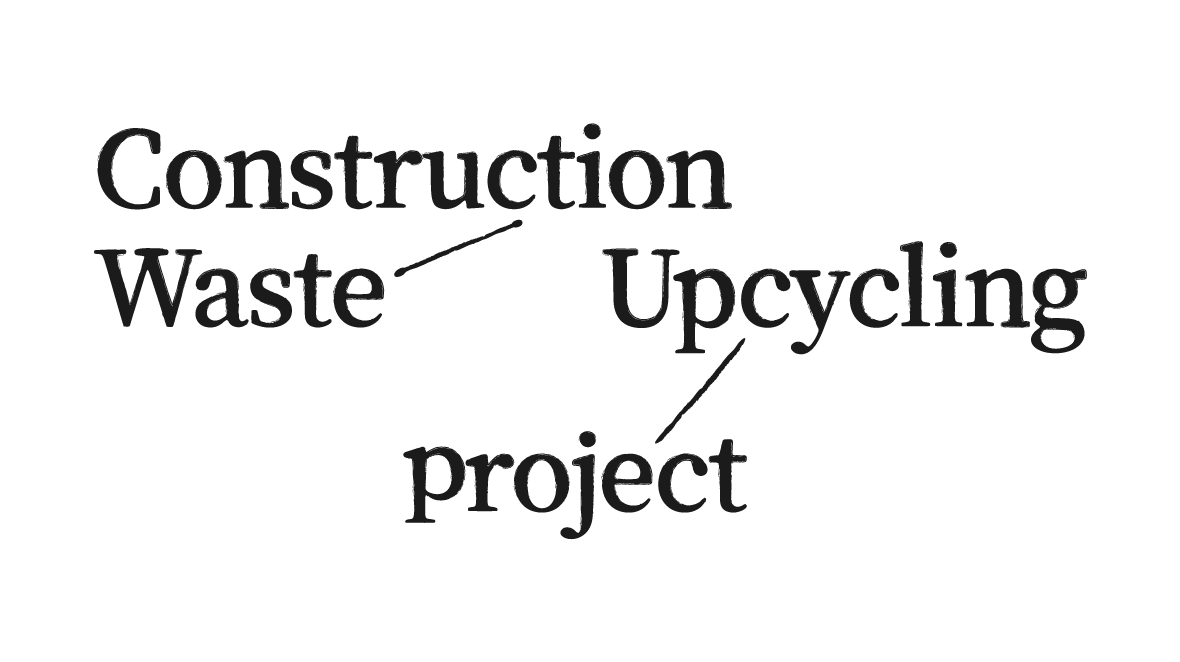At the entrance of New Century Environmental in Renwu Industrial Park, an open urban landscape quietly stands.
It is not just a park installation, but the beginning of a systemic revolution in the regeneration of construction waste called the Gabion Experiment.
Origin: Wasted resources eating away at Taiwan
Waste recycling requires precise sustainability strategies and more comprehensive resource integration.
By chance, Farglory Land and National Cheng Kung University (NCKU) crossed paths and discovered the key to recycling: material flow. Material flow is a systematic method of analysis that tracks materials throughout their life cycle—from sourcing to use, disposal, and reuse. Only after introducing the concept of material flow did the challenges of recycling in the construction industry become clear.
“If we don’t understand where materials come from and where they go, how can we accurately calculate carbon emissions?”
In the past, what most companies cared about was foot traffic, as it most directly reflected economic value.
But as Taiwan promotes its 2050 Net Zero plan, people are paying more attention to carbon emissions, and material flow has become an indispensable concept and tool.
The construction industry deals with vast amounts of material data scattered between architects, construction companies, and waste processors, with no systematic integration or inventory. On top of that, the disposal of construction waste after a building is demolished remains a major challenge for recycling. Take concrete for example: it accounts for about 50–60% of construction waste, but more than 70% of it never enters the recycling system1. These concrete blocks are often illegally landfilled or piled up in soil disposal sites, wasting resources and putting a heavy burden on the environment.
Farglory Land and the NCKU team decided to invite New Century Environmental to take on this challenge together—bringing the hardest-to-process material, concrete blocks, back into the city as renewable urban minerals. The three parties chose concrete—the most common construction waste found at New Century Environmental’s facility—as the experimental material. From this, a demonstration site for environmental stewardship was born: the Gabion Experiment.
Transforming concrete waste into “urban minerals” meant New Century Environmental had to wrestle with both time and costs. They had to allocate manpower to use excavators to find and manually sort concrete blocks by size. While keeping their daily operations running. Even while employees worked overtime, production lines could not be halted—all of these efforts were made simply to prove recycling concrete waste is possible. From a business standpoint, the investment may not be cost-effective, but the management chose to stand by it. That is because they wanted to look beyond short-term efficiency, and give waste a chance at regeneration.

Sifting to get uniform-sized blocks of concrete, one scoop at a time
A small park with calculable carbon-reduction benefits
Farglory Land initiated an industry-academia collaboration with National Cheng Kung University that makes use of the recycled concrete amassed by New Century Environmental. The project takes the gabion—a landscaping feature widely adopted in recent years—as its central design element2. With the combined efforts of more than ten upstream and downstream partners, materials once dismissed as “waste” have been given new life through the Gabion Experiment.

Raw material extraction reduced via the Gabion Experiment
The production of cement increases consumption of natural resources, generates higher carbon emissions3, places pressure on forests, and creates pollution from plastics. The Gabion Experiment successfully reassembled materials long-considered to be useless into a park landscape that is both attractive and practical, while reducing carbon emissions and environmental pollution.



The Gabion Experiment’s waste reduction totaled 15.366 metric tons, with a life-cycle4 carbon reduction of 1,591 kgCO₂e

Intuitive equivalents of 1,591 kgCO2e:
- Equivalent to a car being unused for about 4 months
- Equivalent to planting 74 trees and letting them grow for a year
- Equivalent to protecting 2,700 square meters of forest
- Equivalent to a motorcycle being unused for 1.5 years
- Equivalent to installing 4–5 kW of solar panels
Data from an experiment may not make waves, but it represents the very first ripple of introducing material flow into the construction industry.
A city corner becomes a key recycling prototype
What looks like a miniature park landscape is in fact a key prototype of the construction industry’s material flow system.
From the precise mix of recycled concrete and gabion mesh to the use of EFWOOD—a building material made from recycled textiles—and the calculation of carbon emissions from transportation and construction, every step has been validated on-site by a cross-disciplinary team. For Farglory Land, this experiment will be transformed into a scalable design module—a sustainable model that can be applied to future building projects for open spaces, like sidewalks and gardens. It is also very meaningful for urban renewal projects. Through material-flow-tracking technology, the process of turning demolition waste into an “urban mine” becomes transparent.
When a 15-metric-ton experiment is scaled up 100 times, the resulting carbon reduction would be equivalent to creating a forest. But what is even more valuable than the figures is the consensus among industry allies. Only by integrating construction companies, recycling plants, and designers into a closed loop can we truly change the destiny of construction waste. That is why our partner for this project, New Century Environmental, committed manpower and resources to complete the challenging gabion experiment alongside Farglory Land and realize the shared vision of sustainable development.
This corner proves that revolutionary change often begins with the most fundamental material flow calculations.









In addition to participating in the Construction Waste Upcycling Project, New Century Environmental also makes continuous efforts in neighborhood greening.

The gabion installation—built with recycled materials like recycled concrete, SenSen Wood, and EFWOOD—blends harmoniously into the natural landscape.
“Waste” is no longer the destination but a new beginning
In our current pursuit of sustainability, the Gabion Experiment has opened a window.
This systemic revolution led by material flow reveals the limitless possibilities of the construction industry.
Those possibilities now await the participation and support of more like-minded partners.
The future of material flow not only requires technology, but also a commitment to protecting the Earth.
- According to data from the Ministry of Environment, concrete waste accounts for over 50% of construction waste, but less than 30% is effectively reused. The data comes from the News section of City Green Eco Materials Co., Ltd.’s website at https://www.ctgreen.com.tw/modules/news/print.php?storyid=100&uid=0。
- A gabion is a box-shaped structure woven mechanically with highly corrosion-resistant, high-strength, and ductile low-carbon steel wire, or steel wire coated with PVC or stronger materials. These mesh boxes can be used to hold different types of blocks.
- Carbon emissions refer to the total amount of carbon dioxide (CO₂) and other greenhouse gases (such as methane, or CH₄, and nitrous oxide, or N₂O) released into the atmosphere during human activities. These gases intensify the greenhouse effect, causing global warming and triggering extreme weather, rising sea levels, and other environmental issues.
- Here, it refers to total carbon emissions—both direct and indirect—generated throughout all stages of the Gabion Experiment, including raw material acquisition, production, transport, use, and final waste treatment.




